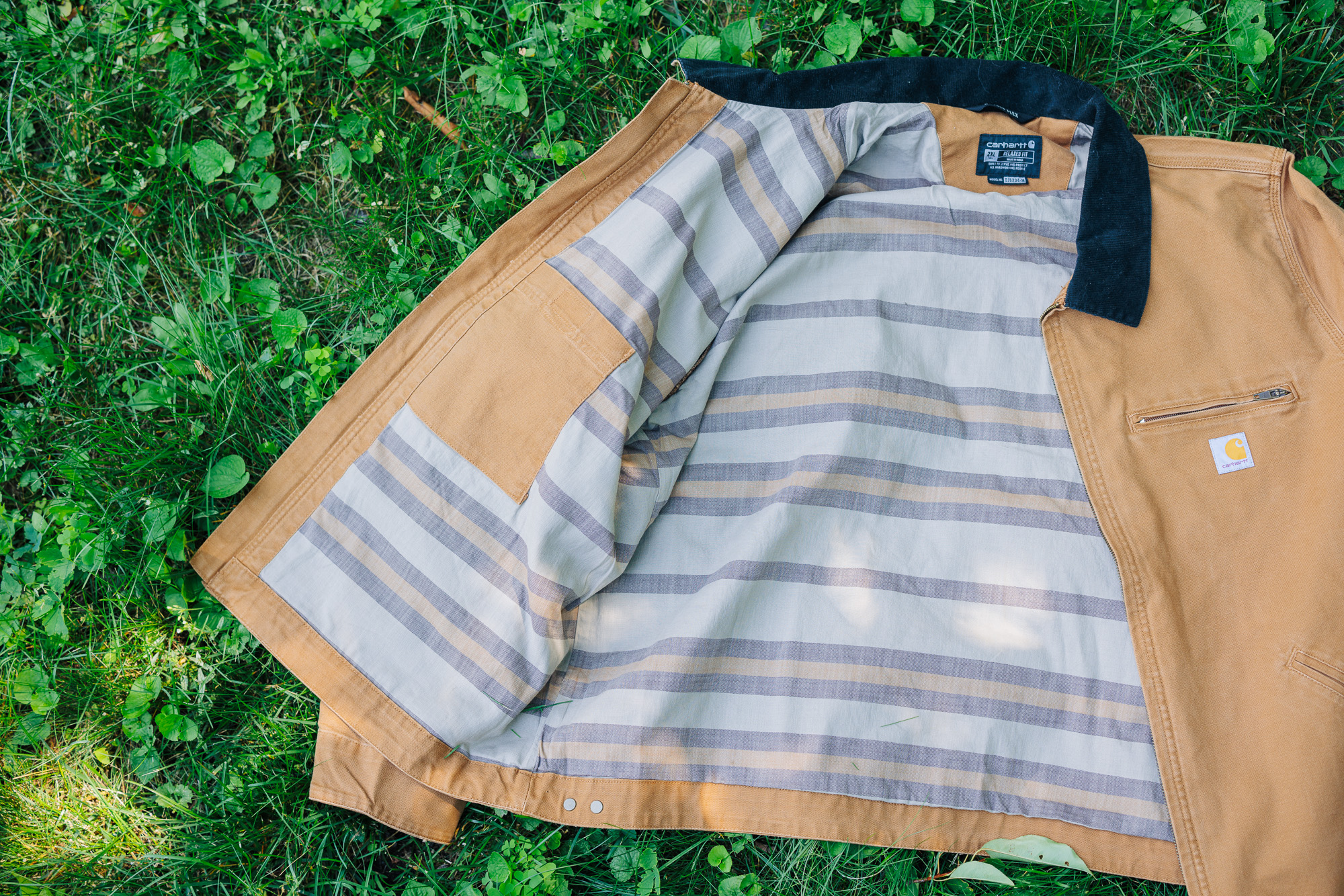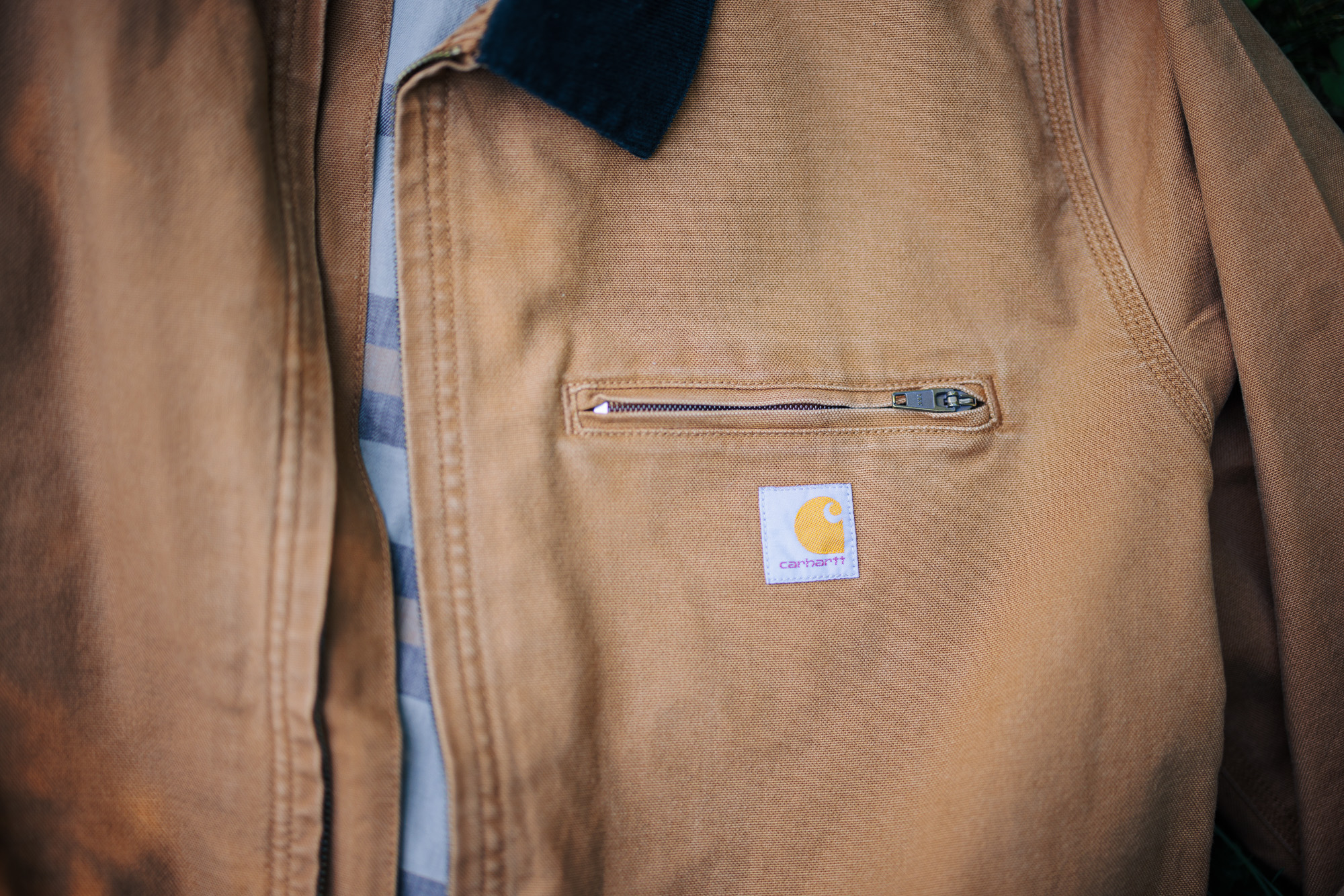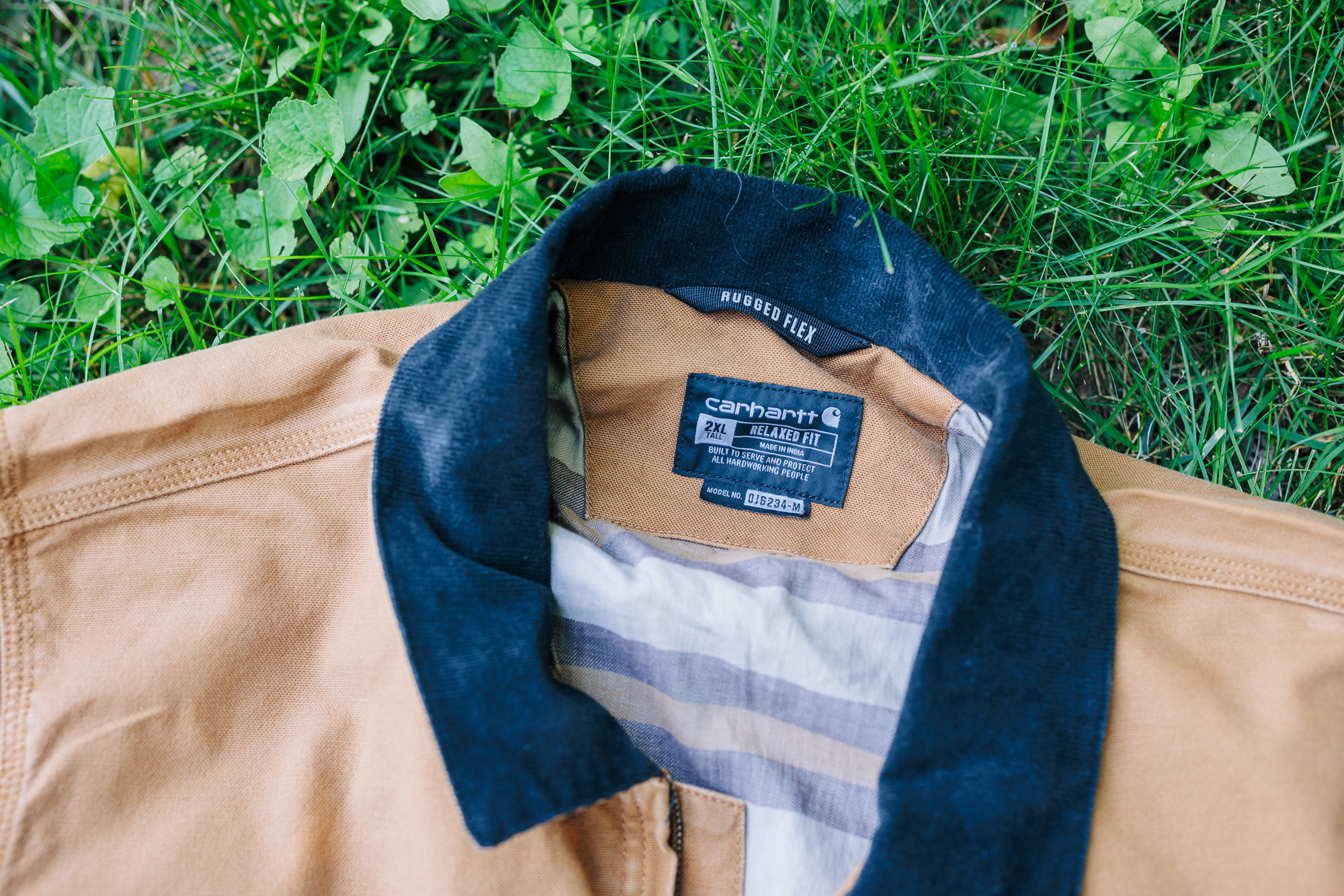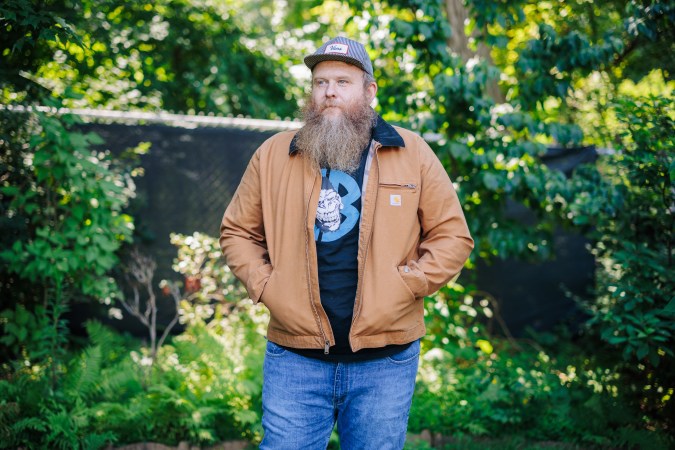The Carhartt Detroit work jacket is an unlikely darling in the vintage clothing world. It’s been in production in various forms seen around auto shops, construction sites, and hardcore shows for 70 years. But thrifters and vintage resellers dream about stumbling across one of these now-coveted, well-loved garments on a Goodwill rack. The more fading and distressing they show, the better. Entire subreddits sweat over identifying and dating jackets originally designed specifically for wear during hard labor. Matthew McConaughey even wore one in Interstellar.
The first of these jackets debuted all the way back in 1954, and some version has remained in the lineup nearly continuously ever since. However, it has evolved along the way as the classic shape morphed to better fit modern tastes. Now, Carhartt has re-engineered and reissued the classically styled Detroit—with its shorter length and slimmer fit—as part of its current lineup.
The Re-Engineered version offers the same durability and shape as the vintage models with some added benefits. It’s more environmentally friendly, the break-in period is shorter, and you don’t need to spend months searching thrift stores and Facebook Marketplace to find one. Here’s how the company brought back a classic look with modern materials.
Digging back into the Carhartt archive
Carhartt began in Detroit way back in 1889. Originally the Hamilton Carhartt & Company, it produced work overalls for steel workers, railroad workers, and anyone who needed tough garments for hard labor. Looking at the company’s clothing lines through the generations, you can watch them evolve without ever losing their identity, which helps explain the garments’ old-school vibe. That’s not a mistake, especially in recent years.
“Carhartt has worked diligently over the last 10 years to build a comprehensive in-house apparel archive,” Vice President Global Product Design, Research and Development Ben Ewy told PopSci via email. “It is frequently referenced by internal departments and has found a prominent place in the company.” The warehouse full of reference garments makes up a tangible record of the company’s history and reference material for future releases.
The redesigned Detroit is part of what Carhartt calls its Icons Re-Engineered program. The offerings also include the K87 T-shirt, which debuted in 1992 (the modern version of which has made up the bulk of my personal wardrobe for years), and the K288 hooded sweatshirt with a slightly slimmer fit and lighter fabric than its modern offerings.
What goes into re-engineering a jacket?

I remember my first Carhartt jacket as a teen. I had only ever worn hand-me-downs, which were already very well broken in. The new model—even back in the ’90s—felt almost like a suit of armor. The heavy blanket lining and woven duck canvas exterior required a few weeks of regular wear before it truly felt broken in. But textile science has changed over the years, which has given Carhartt a chance to streamline the break-in process without sacrificing durability.
“Lighter weight fabrics are the main technical advantages throughout the collection,” Ewy explains. “The new fabrics provide additional flexibility and stretch while also allowing for more form-fitting cuts and sizing, and are better for layering and seasonal versatility.” The new lining in the Detroit does feel noticeably lighter than the traditional (and still awesome) blanket lining. The Re-Engineered model also nixes the lining completely from the sleeves to make it more suitable for the fall and spring seasons.
The 1954 Detroit was denim with a shorter cut than you’d expect compared to modern cold-weather jackets. It has two slash pockets—one on each side—and a zippered breast pocket on the left. The most famous design relies on the same basic build, but it employs Carhartt’s trademark brown colorway with a corduroy collar.
The company sells a modernized model of the Detroit outside of the Icons Re-Engineered line referred to as the WIP version. It’s made from 100 percent cotton, compared to 99 percent cotton in the Re-Engineered version. That last one percent is made of Spandex, which makes a much bigger difference in terms of freedom of movement than those percentages suggest (Carhartt calls this “Rugged Flex”). There are no more pleats where the sleeves attach in the back because the stretch allows the jacket to move without the extra fabric. The Icons model is more compact in just about every way. Instead of a drop hem, it has a straight hem across the back, which shortens the garment by two inches. The chest, sleeves, shoulders, and sweep are all roughly an inch smaller than the modernized Detroit, making the throwback more compact to match its predecessors. Coincidentally, that also makes it more compatible with current styles, which prefer a cropped look.
Making it last

The Re-Engineered Detroit qualifies for Carhartt’s respective Reworked and Repair programs as part of a larger effort to keep clothing in regular rotation and out of landfills. Launched in 2023, the Reworked program allows customers to trade in worn garments for gift cards to buy new gear. The company inspects those trade-ins and resells them at a discount. The garments may have some blemishes, but the company ensures they’re still very wearable. With the current state of the second-hand clothing industry, those blemishes may actually make the garments more desirable. Distressing is in right now.
The Repair program allows customers to send jackets, bib overalls, and other garments to the company so expert sewers can replace buttons or fix tears. It’s a free service for qualifying models, which include Carhartts that are decades-old. “Carhartt Repair is available for free to anyone with a Carhartt garment that’s in need of a repair, regardless of how old the garment is,” says Ewy. “Our team of skilled sewing operators has decades of experience keeping gear in working order longer.”
If you don’t want to send your jacket away, the company also offers DIY repair kits for everything from zippers to patches. Carhartt really does intend to keep these jackets out in the world for a long time. According to its 2023 report, Carhartt sold roughly 35,000 pre-worn garments through the Reworked program and performed 3,744 repairs.
Wearing the new Icons Re-Engineered Carhartt Detroit

Some purists balk at the idea of changing the Detroit jacket at all. That’s fair, but it’s really necessary to put this jacket on to understand why the changes make so much sense. On first wear, it is noticeably more flexible and easy to move in than a fresh old-school Carhartt. The lack of lining in the sleeves makes it cooler, and the whole thing feels lighter overall, so it has a longer wear season. But it still feels like a work jacket. The shorter length and straight hem give it a distinctly old-school vibe. You wouldn’t think a few inches here and there could change the whole look of a jacket, but they really can. Throw on a pair of Levi’s 501s (vintage big E on the tab, of course) with a white T-shirt and work boots, and you’ve got a look that endures. Especially since Carhartt will fix your jacket to keep you wearing it until you hand it down to the next generation.
The post How Carhartt re-engineered an old work jacket that became an unlikely fashion icon appeared first on Popular Science.
from Popular Science https://ift.tt/xRdhn4U





0 Comments